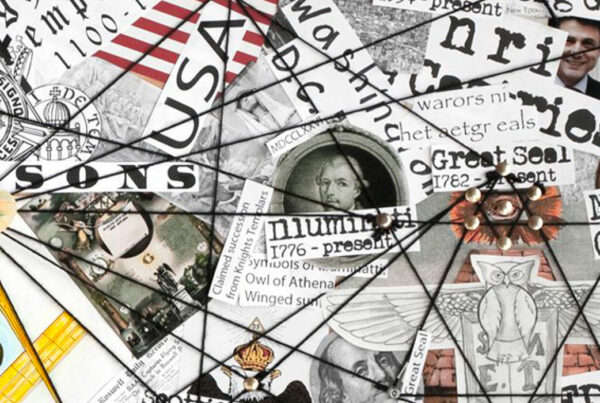1- What is framing bias?
Framing bias is a cognitive bias that influences our decisions and judgments based on how information is presented. Depending on whether the emphasis is placed on the positive or negative aspects of the same data, our perception and choices can be radically different.
We tend to react differently to the same information depending on whether it is phrased in an optimistic or pessimistic way. This is particularly exploited in advertising, politics, and the media to influence our decisions without us being fully aware of it.
2- How does framing bias work?
Our brains do not process all information rationally and objectively. They rely on heuristics (mental shortcuts) to simplify the analysis of reality. Framing plays on these heuristics by changing the perception of the same fact depending on how it is formulated.
A classic example of framing bias comes from studies conducted by psychologist Amos Tversky and statistician Daniel Kahneman. They tested people’s reactions to two identical options presented in different ways.
Positive framing: “90% chance of survival”
Negative framing: “10% chance of dying”
The results showed that participants were more inclined to choose the first option (90% chance of survival), even though the two proposals were statistically equivalent. Positive framing made the option more appealing. This phenomenon is repeated in many areas, from medical decisions to politics.
3- The influence of vocabulary
The vocabulary used creates a framework that shapes the information. The choice of words is crucial in how we perceive a situation. Here are a few examples that illustrate this point:
– People say “employment protection plan” instead of “layoff plan”
– A soldier killed in combat is described as a “hero of the nation” rather than a “victim of war”
– One says “the unemployment trend is decreasing” instead of “unemployment is rising, but more slowly”
– When presenting a poll, one might say a politician has “35% favorable opinion” instead of saying “65% of people disapprove of him/her”
These subtleties in vocabulary change our perception of reality, whether in politics, economics, or even in our daily lives.
4- The influence of visuals
Visual elements can also play a role in framing information. For example:
In a television news broadcast, the images that accompany a report can influence our perception. If a report on a social movement is illustrated with images of violence, it will reinforce the image of chaos and violence associated with that movement. A video showing citizens calmly discussing in a peaceful setting would likely have a much less intense effect and convey a completely different perception of the movement.
5- The influence of context
The framing effect can also be influenced by the emotion or context that precedes or surrounds the information:
During a conversation, framing can guide the response of the interlocutor through the way the question is asked. For example, if you are first asked: “Are you ready to fight against climate change?” and then, “Would you be willing to buy an electric car to reduce your energy expenses?”, there is a high chance that people will answer “yes” to the second question, because of their desire to remain consistent with their initial answer.
In the field of advertising, the emotion triggered by a luxurious setting or a particular staging will naturally lead consumers to associate that quality with the object or product they see.
6- Framing bias and politics
The framing bias is widely used in politics to manipulate the perception of public opinion. Media and politicians often choose a particular frame to interpret an event, which shapes the emotions and judgments of viewers.
Here are some concrete examples:
1- Armed conflicts and media coverage
During armed conflicts, framing bias can change the perception of a group or an event. For example, opponents of a regime may be portrayed as “freedom fighters” or “rebels resisting oppression,” while those supporting the government are depicted as “dictators” or “oppressors.” However, in other reports or from opposing viewpoints, these same opponents may be labeled as “terrorists” or “radical groups,” and the government is defended as a bulwark against chaos. This simplification and polarization of the situation often leads to a Manichean vision of the conflict, where the complexity of realities on the ground and the multiple actors involved are ignored.
2- Immigration and political discourse
The debate on immigration is often manipulated through framing bias. For instance, an article discussing immigration may be worded to emphasize negative aspects:
– “Illegal immigrants represent a threat to our security.”
Conversely, an opposite framing could highlight the economic benefits:
– “Immigrants actively contribute to the economy by filling essential jobs.”
In the first case, the frame creates a perception of danger and threat, while in the second it emphasizes the positive contributions of immigrants. This manipulation of information can fuel stereotypes and irrational fears.
7- How to avoid the trap of framing bias?
To limit the influence of framing bias in our judgments and decisions, here are some good practices:
– Reframe the information: Try presenting the same data from another angle to see if your perception changes.
– Consult multiple sources: Reading different media outlets with varied editorial lines helps to obtain a more balanced view of a subject.
– Analyze the raw numbers and facts: Instead of relying on engaging formulas, check the figures and compare them.
– Be aware of the emotional effect: If a piece of information immediately shocks or excites you, ask yourself whether it is the way it is presented that is influencing your reaction.
Framing bias is a powerful example of how our brain interprets reality depending on how it is presented. Understanding this phenomenon helps us better decipher information and adopt a more critical approach toward media and political messages.






